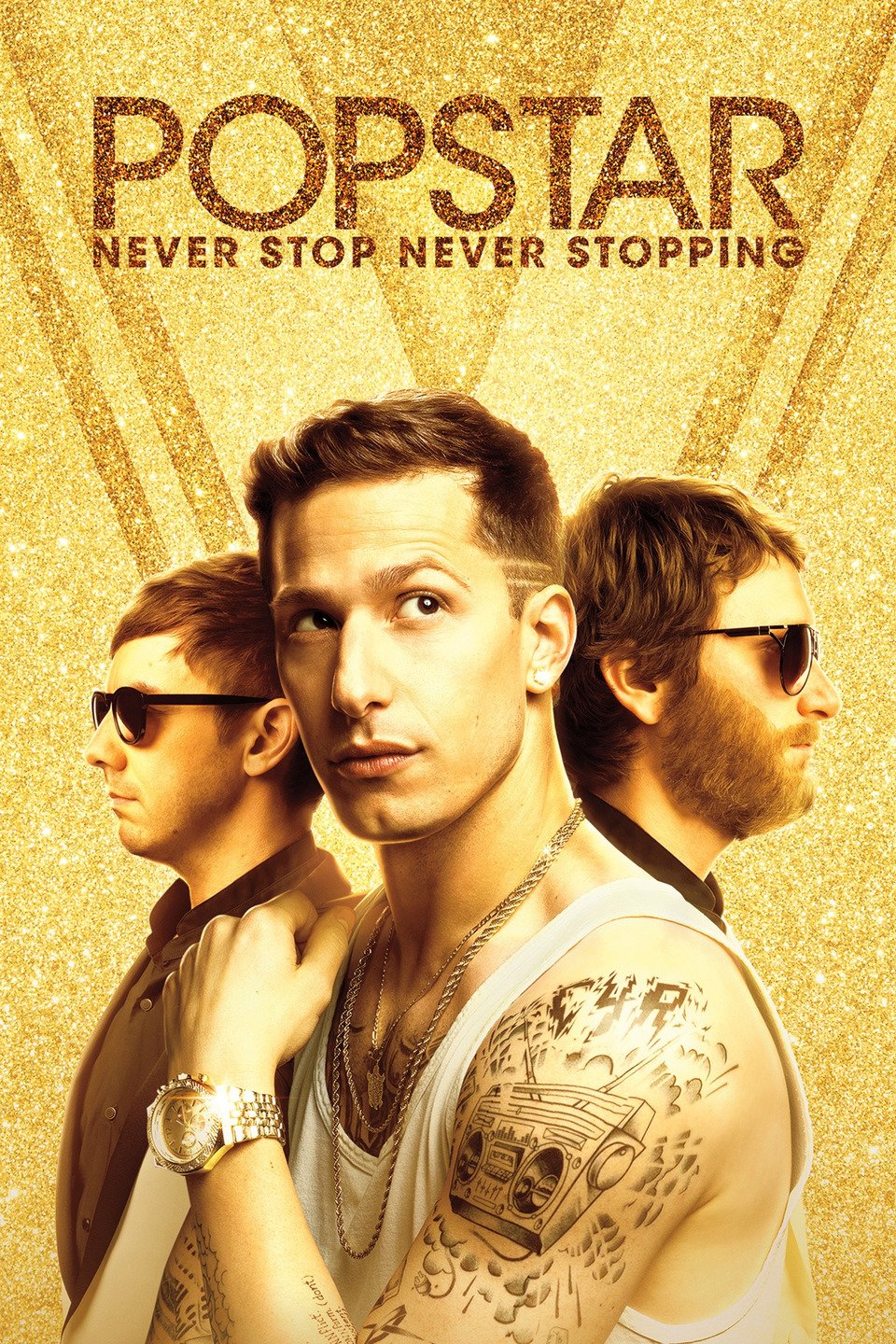Documentary filmmaking allows the artist to inform their audience about a specified topic. This topic chosen by the filmmaker typically focus on educating the viewer on concepts social issues, important people, or world problems however, a documentary is not limited to these concepts. While similar to documentary filmmaking, mockumentary filmmaking focuses more on comedy than informing the audience.
 With their focus primarily set on comedy, mockumentaries are more open ended with their format. However, mockumentaries often end up with the traits of parody/satire, critique, and deconstruction. A mockumentay fulfills the trait of parody/satire by working to emulate another work in a comedic sense. An example of this is Popstar: Never Stop Never Stopping which works to emulate and poke fun at documentaries about famous pop stars. The trait of critique is present when a mockumentary emulates a culture rather than a work. The Office is an example of this as the show targets the typically life and culture of an office worker. Finally, mockumentaries use deconstruction in order to make jokes towards the entire genre documentary filmmaking. We Make Movies is an example of deconstruction as it tells the behind the scenes story of a film production and instead of looking to inform the viewer about the production, the film makes fun of the process.
With their focus primarily set on comedy, mockumentaries are more open ended with their format. However, mockumentaries often end up with the traits of parody/satire, critique, and deconstruction. A mockumentay fulfills the trait of parody/satire by working to emulate another work in a comedic sense. An example of this is Popstar: Never Stop Never Stopping which works to emulate and poke fun at documentaries about famous pop stars. The trait of critique is present when a mockumentary emulates a culture rather than a work. The Office is an example of this as the show targets the typically life and culture of an office worker. Finally, mockumentaries use deconstruction in order to make jokes towards the entire genre documentary filmmaking. We Make Movies is an example of deconstruction as it tells the behind the scenes story of a film production and instead of looking to inform the viewer about the production, the film makes fun of the process.
 Image Links:
Image Links:
https://upload.wikimedia.org/wikipedia/en/b/b2/We_Make_Movies_%282017%29_Poster.png
https://images-na.ssl-images-amazon.com/images/I/81R7QZV5P1L._SY445_.jpg
http://www.gstatic.com/tv/thumb/v22vodart/12669854/p12669854_v_v8_aa.jpg
Traits of Documentary
Documentaries commonly follow the format of addressing the topic with interviews, cutaways, live action, process footage, and archival resources. Interviews are generally what moves the documentary forward, with the spoken words of the interviewees depicting what is shown on screen. Cutaways are the images and clips shown to the audience that relate to the spoken dialogue. Examples of cutaways being images of related people, locations, and events. Live action describes footage of the interviewee and their reactions. This footage is meant to take a step away from the speaking in order to show how the person feels. Process footage is footage of the filming of the documentary. This footage is used in order to ground the documentary and to show how the person talking is presenting their information for the documentary. Lastly, archival resources are used to expand the realism of the documentary. Old images or footage present a viewpoint of the topic from the time at which it occurred.
Traits of Mockumentary
 With their focus primarily set on comedy, mockumentaries are more open ended with their format. However, mockumentaries often end up with the traits of parody/satire, critique, and deconstruction. A mockumentay fulfills the trait of parody/satire by working to emulate another work in a comedic sense. An example of this is Popstar: Never Stop Never Stopping which works to emulate and poke fun at documentaries about famous pop stars. The trait of critique is present when a mockumentary emulates a culture rather than a work. The Office is an example of this as the show targets the typically life and culture of an office worker. Finally, mockumentaries use deconstruction in order to make jokes towards the entire genre documentary filmmaking. We Make Movies is an example of deconstruction as it tells the behind the scenes story of a film production and instead of looking to inform the viewer about the production, the film makes fun of the process.
With their focus primarily set on comedy, mockumentaries are more open ended with their format. However, mockumentaries often end up with the traits of parody/satire, critique, and deconstruction. A mockumentay fulfills the trait of parody/satire by working to emulate another work in a comedic sense. An example of this is Popstar: Never Stop Never Stopping which works to emulate and poke fun at documentaries about famous pop stars. The trait of critique is present when a mockumentary emulates a culture rather than a work. The Office is an example of this as the show targets the typically life and culture of an office worker. Finally, mockumentaries use deconstruction in order to make jokes towards the entire genre documentary filmmaking. We Make Movies is an example of deconstruction as it tells the behind the scenes story of a film production and instead of looking to inform the viewer about the production, the film makes fun of the process. Image Links:
Image Links:https://upload.wikimedia.org/wikipedia/en/b/b2/We_Make_Movies_%282017%29_Poster.png
https://images-na.ssl-images-amazon.com/images/I/81R7QZV5P1L._SY445_.jpg
http://www.gstatic.com/tv/thumb/v22vodart/12669854/p12669854_v_v8_aa.jpg
Work Log
- Monday 9/23: Continued work on script and also began to create shot list alongside script.
- Tuesday 9/24: Sick (No Work)
- Wednesday 9/25: Worked further on script and shot list
- Thursday 9/26: Continued work on script
- Friday 9/27: Pep Rally (No Work)

Comments
Post a Comment